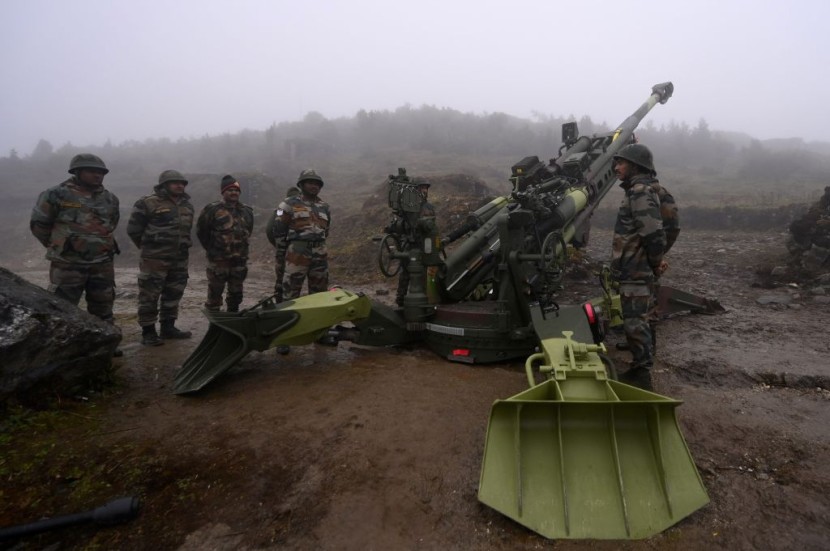
A video has surfaced online that shows a fierce battle between Indian and Chinese forces near their disputed Himalayan frontier, providing a rare glimpse into the long-simmering border tensions between the two Asian powers.
An Indian military official with experience in the China-India border conflicts said the video was recorded on September 28, 2021, in the highlands of the Indian state of Arunachal Pradesh along the Line of Actual Control, the de facto boundary, CNN reported.
The China-India fight video that occurred on Friday along the border in the rural Tawang district of northeastern India has been spreading on Indian social media, but it is unclear who recorded or uploaded it. The recent China-India fight was the first documented occurrence in around two years.
China-India Brutal Clash Caught on Cam
The China-India fight video shows soldiers from both nations in a hilly landscape that has not yet seen winter. Despite being segregated by barbed wire, Indian forces seemed to be hitting Chinese soldiers with wooden clubs and metal pipes. Bricks and stones are thrown by Indian troops in many scenes.
On the other side of the fence, several Chinese troops seem to be armed with batons or long sticks.
The Chinese soldiers eventually leap over a small stone wall and flee the area, to the applause of the Indian side, while the barbed wire crumbles and the Indian forces advance after the China-India fight.
According to an Indian military source, patrols along the LAC are usually ineffective since the two countries have different ideas of where the boundary lies.
Former Foreign Secretary Vijay Gokhale has said that the Chinese premise that there would be no quick retaliation to low-level pressure on the Line of Actual Control "because India is risk-averse" may no longer be accurate.
Gokhale, a former Indian ambassador to China, stated that the 2020 Galwan incident "reshaped national public opinion about China," as per a report from Indian Express.
In his paper titled "A Historical Evaluation of China's India Policy: Lessons for India-China Relations," he noted that strategic restraint has been redefined. The August 2020 Snow Leopard counter-operation at Rezang La/Rechin La occurred due to a shift in politicians' risk tolerance, wherein China got surprised by India's purposeful aggression.
From Ladakh in the west to the Indian state of Arunachal Pradesh in the east, which China claims in its entirety, India and China have been in a bitter territorial dispute over the Line of Actual Control for decades. In 1962, a battle broke out on the border between India and China.
US Monitors the India-China Border Conflict
The United States is keeping a close watch on the China-India fight, according to State Department spokesman Ned Price.
Price told reporters on Tuesday in Washington, DC, that the US "do strongly oppose any unilateral attempts to advance territorial claims by incursions, military or civilian, across the border at the established Line of Actual Control." He also urged India and China to use existing bilateral channels to discuss disputed boundaries, per AP News.
Troops from both sides have conducted patrols along the contested boundary in recent years. The two giant Asian countries often accuse each other of deploying troops into the other's country, and their militaries frequently clash.
Tensions flared in the Galwan Valley of Ladakh's Karakoram Mountains in June 2020 when troops clashed with stones, fists, and clubs. There were 20 Indian casualties and four Chinese. Both nations had tens of thousands of soldiers, artillery, tanks, and fighter planes along their de facto boundary.
A critical area of conflict in Ladakh has seen partial withdrawals of Indian and Chinese troops after consultations between military leaders, but the China-India fight continues.
Related Article: : India Increasing the BrahMos Supersonic Missile Range with Russian Onyx System Upgrade
© 2026 HNGN, All rights reserved. Do not reproduce without permission.




